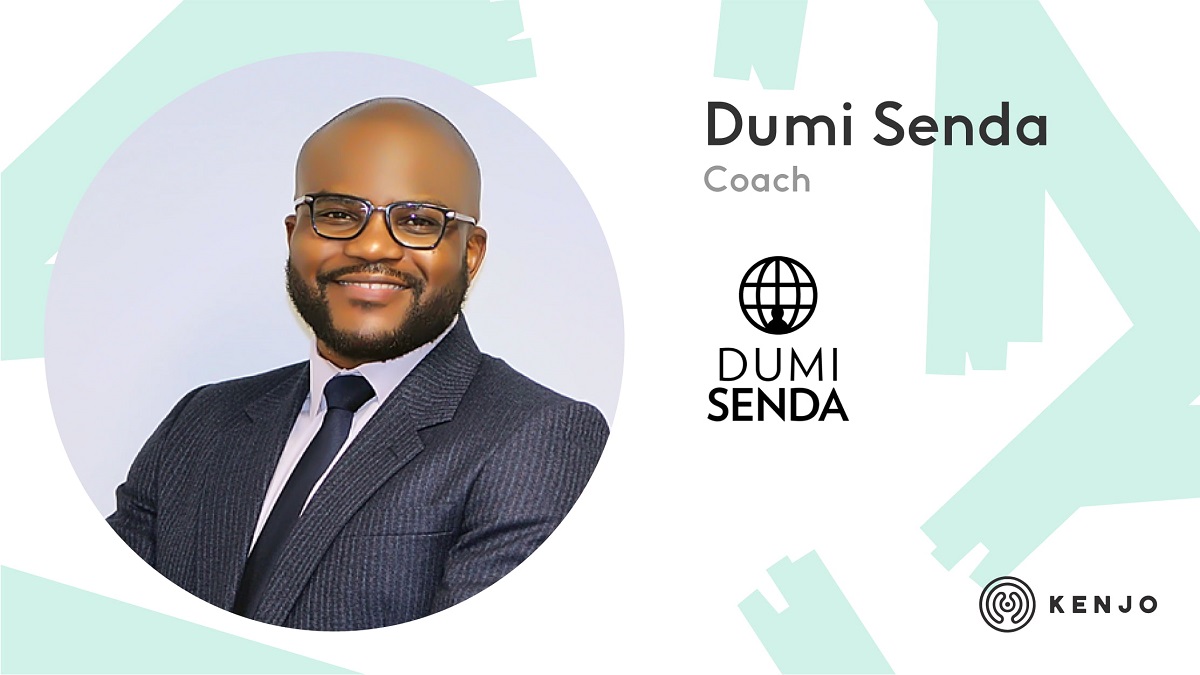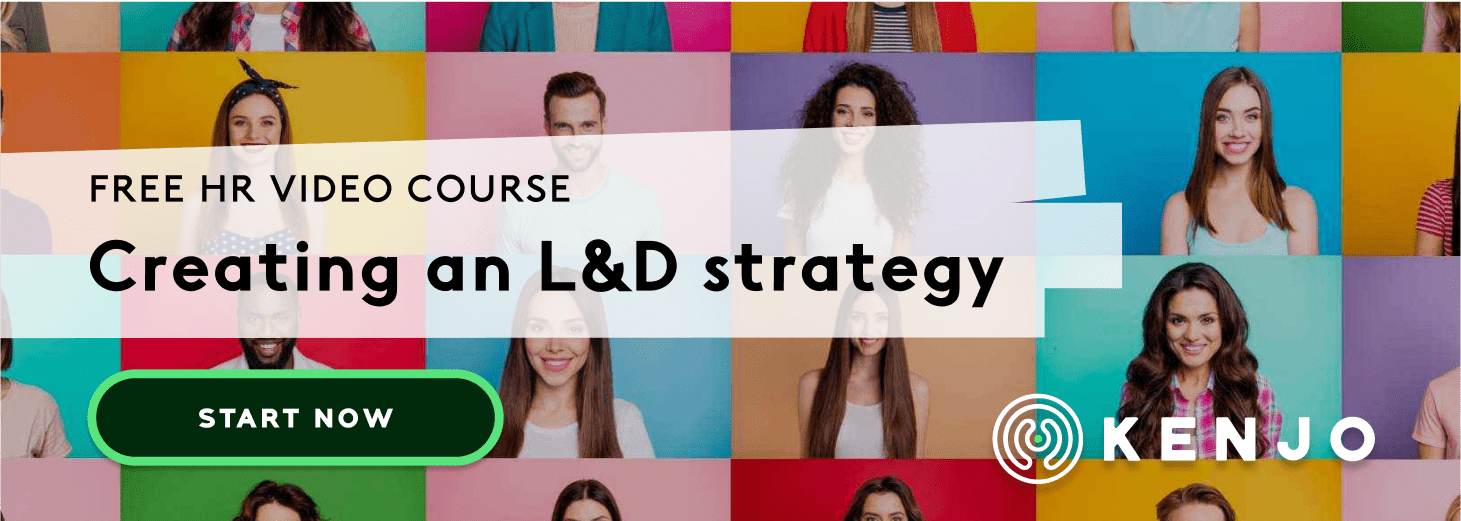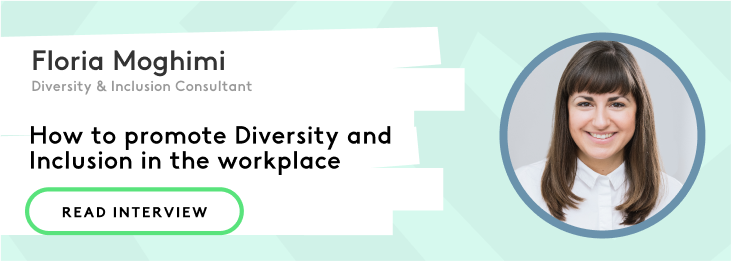Diversity & Inclusion for SMEs with Coach Dumi Senda

How to efficiently deliver meaningful change by global D&I expert Coach Dumi Senda who went from sweeping factory floors to graduating with a Masters from Oxford University. He goes through the important 5 D's of Diversity & Inclusion that SMEs should focus on.
“It feels like being stuck in a valley between two hills; behind you a hill you have just conquered which relates to getting people to buy into the need for change, and in front of you an even bigger hill which relates to how to achieve the change.” This is how a representative described the challenge for organisations with limited budgets when trying to progress on diversity and inclusion (D&I) in the workplace during a workshop I recently delivered for UK-based organisations in the voluntary sector.
If you are an HR, D&I practitioner or leader, particularly in a small to medium enterprise (SME), you can probably relate to the struggle. With the advent of the Covid-19 global pandemic, the ‘hills’ have grown bigger in size and number, and yet the need to scale them could not be more urgent.
Recent events such as the Me-too and Black Lives Matter (BLM) movements have revealed systemic inequalities that require all of us to step up and take on the challenge of making our organisations, sectors, communities, and wider society more diverse and inclusive. However, leading the change can be daunting if you do not feel confident about how to, despite having the best intentions.
Given the tension between rising needs and reducing budgets, the question of how to deliver meaningful change efficiently, D&I on a budget so to speak, has assumed critical importance. In this article, I provide practical steps to help you go from feeling stuck to leading necessary change. Before delving into what you should do, let’s begin with what you should avoid.
1ST COMMON PITFALL YOU SHOULD AVOID: DOING NOTHING
It may surprise you to learn that the biggest limitation we face in D&I is not the lack of resources, but rather the lack of resourcefulness. This emanates from the tendency to focus on what we do not have and be blinded to what we have. For example, focusing on how limited our budgets are and overlooking how limitless our people’s creativity can be.
Inaction on D&I also comes from fear of getting it wrong, particularly on but not limited to race. This is because conversations on the subject tend to be broached in a “them” and “us” way, breeding suspicion and mistrust which cripples progress.
The key to getting unstuck is co-creating safe spaces with colleagues and other stakeholders that enable us to be on a shared journey - where making mistakes (not to be confused with wilful ignorance) is welcome - with intention to embrace opportunities to learn and grow together. That way, we become more comfortable tackling than living with inequality.
2ND COMMON PITFALL YOU SHOULD AVOID: DOING THE BARE MINIMAL
Doing the most we can is not merely about the amount of activity we have around an issue, but whether we are taking sufficient action to get meaningful results.
To get unstuck, we should be intentional about checking our motivation, and proceed with the necessary clarity to avoid taking ill-conceived action that either misses or worsens underlying issues. For example, in the wake of the BLM, many organisations in Europe, UK, and US (understandably) scrambled to hire black people to tackle their “diversity problem.” However, most had not done the preparatory work to create an inclusive environment to foster diverse working. As a result, they achieved a level of visual diversity, but fell short on creating the inclusivity necessary to support diverse teams.
Notably, the wave of diverse hiring in the wake of the BLM generated a higher ethnic mix at entry level, but organisations largely remained un-diverse higher up the ranks, particularly at management, senior leadership, and executive levels. To avoid falling into a similar trap, think carefully about what change you want to achieve and whether your proposed interventions are relevant and effective for delivering it.
So, what steps should you take to achieve meaningful change efficiently? I propose the following 5-D roadmap (drawing but not necessarily based on the Appreciative Inquiry methodology) to guide your journey towards unlocking genuine workplace and broader D&I:
Step 1: DISCOVER YOUR STARTING POINT
While it is tempting to launch straight into acting on D&I issues, ill-conceived action risks either missing or messing opportunities for meaningful change, as I have alluded to in the introduction to this article. To avoid applying ‘solutions’ that are neither relevant nor effective, also known as solutioneering, invest in understanding your starting point by assessing:
- What is going well?
- What is getting in the way?
- What areas need improving or change?
Bear in mind that we do not have the same starting point in many aspects of life, including D&I. Therefore, expect to have some areas of strength and of weaknesses. The key is being intentional about getting better and adopting a forward-looking and collaborative approach, rather than engaging in blaming one another.
Having clarity on your starting point will enable you to effectively direct available resources to efforts that are necessary to take you forward, thereby minimising wastage. It also helps with setting clear priorities by tackling more urgent issues and building up to broader aspects down the line.
In some instances, it may be more beneficial to tackle issues that represent ‘low-hanging fruits’ which require minimal effort and resources, while you build up to the bigger agendas. This is likely to motivate your people by rewarding their efforts with results in the short term. An important question to stress-test your approach is, are we practising prioritisation or merely avoidance?
Conversely, you could direct resources to more complex initiatives which may unlock greater value in the long run. This would require communicating that results may not be visible right away, so that your people are committed for the long haul. There is no one size fits all approach; the key is doing what works best for your context, ensuring that you bring all your people along on the journey. Below are some practical steps you can take to conduct a D&I diagnostic:
a. Leverage sector-wide data
To gain a bird's-eye view of the status of D&I in your organisation and sector, consider tapping into available research, as your capacity to conduct primary research may be limited. Bear in mind that data does not relate to numbers only; qualitative data such as stories on people’s lived experiences is just as valuable.
A helpful question to guide your thinking could be, what issues are organisations of similar size and work in my sector focusing on? What approaches are they taking to tackle these issues?
The goal should not be to simply copy and paste what others are doing, but rather to be informed by it to test relevance for your context.
b. Conduct a documentary review
For a frog’s eye view (different from a bird’s eye view in that it focuses on detail-as opposed to a bigger picture perspective) of the status of your D&I, conduct an in-depth review and analysis of essential documents such as
- key strategies,
- policies and guidelines,
- communication trails,
- training,
- hiring and promotion trends,
- and pay patterns etc.
The review should be informed by knowledge of best practice to help you understand the status or health of your D&I.
c. Conduct a lived experience audit
The best way to understand the needs of your people is to ask them. Running a survey is a cost-light way to gain a broad, if not necessarily detail-rich view of lived experiences. To get the best results, design the questions carefully to ensure that they are inclusive and give you useful information.
Before sending out the survey, sensitise your people on its value in informing your D&I strategy to gain their buy-in and trust, a key factor in driving up responses.
For a more detail-rich understanding of lived experiences, conduct focus groups and follow-on 1-2-1 stakeholder interviews. The key is creating a safe space where your people feel confident enough to share their true views and not just what they think you want to hear. Non-attribution helps with reassuring people that there will be no reproach and victimisation because of what they share.
Having an external consultant facilitate the process could further reassure your people that the process will be fair, transparent, and thorough. I call this the microscopic view of D&I because it relates to how people feel about the workplace culture.
STEP 2: DREAM TOGETHER
This involves coming together to explore what good can look like, setting a clear direction of travel, and creating a sense of being in it together. Bear in mind that good will not look the same from the perspective of people who experience the organisation differently.
The more people you invite from different communities and sections of your organisation, the more representative the views that will emerge from the exercise are likely to be. To focus the discussion, draw on the vision and mission statements of your organisation and ask what would living out our espoused values look like in practice from your viewpoint?
Collate emergent themes and draw on them for the next phase of your journey. Bearing in mind that the phases are not necessarily linear; it may be necessary to re-imagine what good can look like further down the process of organisational change.
STEP 3: DESIGN A ROADMAP
Starting with your collectively envisioned end point, or as I prefer to call it, horizon view, take a mental journey back to your starting point and reverse-engineer steps that will take you to where you want to end up. This is likely to give you goals that are relevant and effective for your desired outcomes. It also enables effective resource allocation, limits wastage, and gives you the best chance of setting off on the direction that is likely to lead to your envisioned end point.
To help you get started, draw on the below 4-S step framework to be a guide on how to develop a comprehensive roadmap towards genuine diversity and inclusivity:
- Self-work: Change and or progress always begins with the basics, with individuals who are willing to shift their mindsets, attitudes, and actions. Ask yourself, how am I embodying, demonstrating, and promoting the values of inclusivity? What am I doing well at, what should I sustain and share? What could I do better at, what should I change or improve on? How can I support others in my sphere of influence to make necessary changes?
- Seek difference: This includes but should not be limited to recruitment. From a structural perspective, ask are we connecting with and serving all the communities in our proximity? Bear in mind that technology has broadened organisational reach, therefore geographical separation should not necessarily lead to alienation. From an operational perspective, ask are our practices and processes informed by and sensitive to difference of thought and lived experiences?
- Support difference: There is increasing evidence showing the benefits of targeted support for marginalised employees and service users. Bear in mind that positive action is different from positive discrimination (the latter is illegal in most European countries and the UK). However, positive action (which is legal) entails levelling the playing field so that groups which suffer historical and current disadvantages have a fair chance at success. For example, mentoring and or coaching under-represented employees on how to navigate their way into more senior roles, thereby increasing diversity in the top sections of organisations and sectors.
- Speak up for difference: All of us can and should speak up for difference through advocating for fairness and being allies to colleagues that are marginalised. This entails having the personal conviction to use our voices to defend and uphold the values of inclusivity. Helpful questions to ask yourself include, am I in a sub-group that excludes others? Does this subgroup give unfair advantage to its members while simultaneously being disadvantageous to outsiders? What should I be doing to give excluded groups access or to remove the disadvantages of being an outsider?
STEP 4: DELIVER ON COMMITMENTS
A strategy is only ever as good as the results it generates, and to get results you must act on your plans. Getting results does not mean only having success; failing can be just as valuable as succeeding if we embrace it as an opportunity to learn how to do it better next time.
The key is to approach D&I as being an ongoing journey with stepping stones; sometimes our feet land firmly and other times we miss, but keep moving forward. Delivering on your commitments unlocks value beyond the immediate outcomes of an initiative; it builds confidence and trust about your commitment to D&I among your people.
Below are some practical steps you can leverage to deliver on your commitments:
- Put together a task or project team to oversee the delivery of your initiatives or program. This helps with having clarity on who is responsible for what and keeping track of progress, resource allocation, and stakeholder management.
- Set out a clear timeline for delivery of each component of your project. Where possible, check stakeholder availability and send out calendar invites blocking off slots and minimise the risk of stakeholders failing to attend important meetings and or events.
- Set aside time for checking in with various stakeholders to keep track of where you are; ask what has gone well so far, what has not worked so well, and what changes are needed to get back or stay on track? Keep in mind that plans are helpful for giving a structure to delivery but should not stop you making necessary changes when new information comes to light.
- Hold yourself and your colleagues accountable to the wider team by creating feedback loops to inform them of your progress and get their feedback on each key stage.
- Remember to take care of yourself and colleagues throughout the process. Be clear about what you have capacity to do and either delegate or postpone aspects that tip the balance negatively for you. Be intentional about minding your emotional and mental wellbeing, particularly when dealing with highly emotive issues. It is okay to say I need help, or I am not skilled or experienced enough to handle this aspect. Knowing your limits demonstrates competency, not incompetency.
STEP 5: DISSEMINATE YOUR IMPACT
You have probably heard the saying, what gets measured gets done. Think of measuring impact as being a part of your accountability framework. It shows the value generated from the resources inputted and the broader benefits of investing in a D&I agenda.
Measuring impact should not be approached as being a process of justifying or validating, but rather ascertaining outcomes. The former leads to an unhelpful culture of finger pointing and defensiveness, whereas the latter enables stakeholders to take collective ownership of what has worked well and what has not worked as well as hoped. Thereby setting them up for continuing the journey of learning from mistakes and working towards improving outcomes.
An aspect that is often overlooked on D&I agendas is sharing our stories about the journeys we have been on as individuals, teams, organisations, sectors, and wider society. The risk of not communicating our impact is that D&I is only ever talked about in negative and sensational terms that do not lead to meaningful progress.
Telling our stories should not be about creating an impression of a ‘perfect journey’ with ‘perfect outcomes’, but rather about inviting people in to understand the challenges, opportunities, and benefits. This is likely to inspire others to embrace D&I as being a shared journey we should all embark on, not because it is easy but because it is worth it.
By the way, we talk about D&I in our newest free online HR course on learning and development. Professor Aditi Raghuram, who specialises in D&I explains the link between learning and development and D&I. You can find the link to download the course here.
About our guest writer: Dumi Senda
Coach Dumi, known as “rags to impact coach” went from sweeping factory floors to graduating with a Masters from Oxford University to become a globally acclaimed Diversity and Inclusion expert and coach. Now working with global brands on achieving meaningful workplace equality, diversity and inclusion, he is passionate about using his story to help others get unstuck, connect with their greatness and live a life of purpose and impact. You can find him on Youtube and LinkedIn.


.png?width=232&name=circle-cropped%20(1).png)
